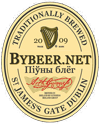Motor Controls: Basics for Electric Motors
Motor controls are essential components in modern electrical systems, enabling precise operation, efficiency, and protection for electric motors. They are indispensable in everything from industrial settings to homes. Here, we’ll explore the components, types, and applications of motor controls.
Categories of Motor Controls
Motor Controls can be categorized based on their purpose, complexity, and application. Each type is designed to suit unique operational needs, ensuring flexibility in diverse use cases.
Basic Manual Motor Controls
Manual motor controls are the simplest type of control mechanisms. They allow operators to start, stop, or change the motor’s state manually. These are commonly used in smaller systems, featuring switches, pushbuttons, or rotary handles. While simple, they are reliable for non-automated applications.
Automatic Motor Controls
Using sensors, timers, and PLCs, automatic controls eliminate the need for manual operation. These systems are ideal for applications requiring high precision and repeatability, such as manufacturing lines and HVAC systems. Such controls enhance efficiency and minimize errors.
Essential Parts of Motor Control Systems
Knowing motor control components is key for choosing and maintaining the right system.
Switching Devices: Contactors and Relays
Motor controls rely on contactors and relays for switching. They allow or interrupt the flow of electricity to the motor, facilitating on/off operations. High-current systems use contactors, while lower currents rely on relays. Together, they provide safety and efficiency.
Overload Protectors
Excessive current can damage motors, which is prevented by overload protectors. These devices monitor the motor’s current and disconnect the power supply if the current exceeds a safe threshold. This protection prevents overheating and prolongs motor lifespan.
Variable Frequency Drives (VFDs)
VFDs regulate motor speed and torque through frequency and voltage adjustments. They improve energy efficiency, reduce wear, and enable precise adjustments.
Applications of Motor Controls
Industries widely use motor controls to maintain efficiency and reliability.
Motor Controls in Industry
In industrial settings, motor controls are integral to automation, robotics, and production machinery. They provide precise control over motor speed, direction, and torque, enabling optimized production processes.
Home and Commercial Motor Control Applications
Motor controls are also prevalent in everyday applications, from HVAC systems to elevators and appliances. These controls enhance user convenience and energy efficiency while ensuring safety.
Final Thoughts
Precision, safety, and efficiency make motor controls essential for electric motors. Whether manual or automatic, understanding the types, components, and applications of motor controls is key to leveraging their full potential in various systems.
FAQ On Motor Controls
1. Why are motor controls essential?
Motor controls are devices or systems used to manage the operation of electric motors. These systems are vital for ensuring precision, efficiency, and safety in motor operations.
2. How do manual motor controls differ from automatic ones?
Human interaction is necessary for manual motor controls, typically via switches or buttons. Automatic systems operate autonomously with sensors and logic controllers, enhancing precision and reducing errors.
3. {How do Variable Frequency Drives (VFDs) improve motor performance?|What are the benefits of using Variable Frequency Drives (VFDs)?
Variable Frequency Drives regulate frequency and voltage for better motor operation. They provide precision control, cut energy costs, and decrease mechanical wear.
4. What are the applications of motor controls?
Industries like manufacturing, robotics, and HVAC rely heavily on motor controls. Residential and commercial applications include elevators, HVACs, and appliances.
